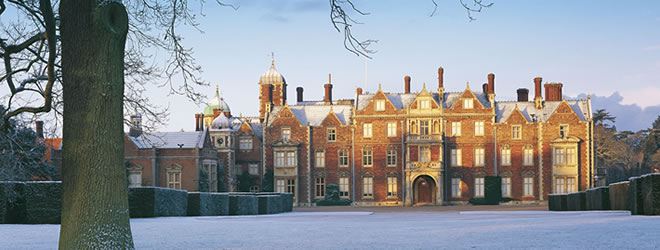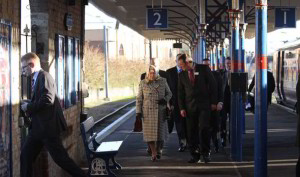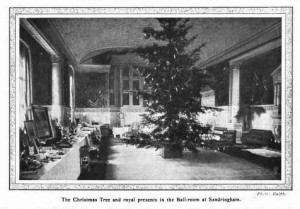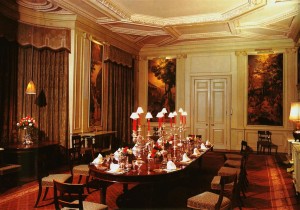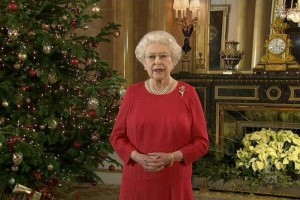The history of the Sandringham Estate dates back to the time of Prince Albert, later known as King Edward VII, who was the eldest son of Queen Victoria. In 1862, the Queen had purchased the property located in Norfolk, England for him shortly before his marriage to Princess Alexandra of Denmark in 1863. The Royal couple made Sandaringham their country home and stayed there frequently when they were not in London to fulfill their official royal duties. Over the next 150 years the Sandringham Estate has been used continuously by four generations of the British Royal Family and is currently privately owned by Queen Elizabeth II. (For additional information about the history of the Sandringham Estate, please click on the link)
In 1926, the Queen, then known as Princess Elizabeth, was just eight months old when she first accompanied her parents, the Duke and Duchess of York, on a visit to Sandringham to see her grandparents, King George V and Queen Mary. During the reign of King George V the annual tradition of spending Christmas at Sandringham was started and continued throughout the years of his reign until his death in 1936. His son, King George VI, choose to continue the custom for another sixteen years until his own death at Sandringham in 1952. Since that time, Queen Elizabeth has also chosen to spend the holiday season at Sandringham privately with her family but more importantly she uses the time for personal reflection on the anniversary of her father’s death in January and her own accession to the British throne. Sandringham has become the official winter residence of the Queen every year from just before Christmas until sometime in the month of February. She will spend the days privately with her family enjoying the beautiful grounds, hunting and riding.
The Queen will travel on the morning train from London to Sandringham a few days before Christmas to supervise the final holiday preparations and the members of the Royal Family will arrive at Sandringham House on Christmas Eve. Even though this is a family celebration, strict protocol is observed and even the order of arrival is coordinated based on seniority determined by the line of succession with Prince Charles and his wife Camilla, the Duchess of Cornwall, arriving last since the Prince of Wales is the immediate heir to the throne. Each of the Royal Family members has arrived at Sandringham with several pieces of luggage because they are expected to change outfits several times throughout each day of their stay for a variety of activities; such as afternoon tea, hunting or riding and formal dinners. Finally, upon arrival at Sandringham, each person will be given an itinerary listing the events that will take place over the next few days with their scheduled times.
On Christmas Eve, promptly at 4 pm, family members will gather for a traditional English tea which includes fresh baked scones and Earl Grey tea is served in the White Drawing Room. Everyone will have freshen-up after their journey to Sandringham and after a brief rest they will have changed into beautiful tea dresses for the women and tweed suits for the men. Standing in a place of prominence in the White Drawing Room will be a Norfolk spruce tree which has been cut from somewhere on the 1,000 acre Sandringham Estate and the younger members of the family will gather around to finish putting the ornaments and trimmings on the Christmas tree.
After the tea service, everyone will proceed into the Red Drawing Room to open the presents since the Queen prefers to have it done of Christmas Eve in order to reserve Christmas Day as a more solemn religious celebration. Around the perimeter of the Red Drawing Room there are several trestle tables set up for each member of the Royal Family and, of course in keeping with tradition, the tables are organized in order of precedence and labeled with their names. Despite the wealth of the Royal Family, inexpensive and humorous gifts are given and preferred over more expensive gifts. Princess Diana found this out the hard way when after her marriage to Prince Charles and on her first Royal Christmas at Sandringham she bought cashmere sweaters and other expensive items for her new in-laws.
After opening the presents, everyone will return to their rooms to change into formal clothes for dinner, women will wear elegant evening gowns with their best jewels and men will be dressed in black tie. The dinner gong rings promptly at 8 pm to call guests for pre-dinner drinks. Then at 8:15 pm the Queen will lead everyone into Sandringham’s formal dining room which is aglow with candlelight and the table is set with the finest china, silver and crystal. The three-course dinner will be finished around 10 pm and then the Queen and the other ladies will move into another room for coffee while the Duke of Edinburgh will remain with the other men in the dining room for brandy but at the request of the Queen there is no cigarette or cigar smoking. Afterwards the two groups will join together to possibly play cards or other games and the evening will end at around midnight when the Queen retires for the evening, strict protocol requires that everyone remains at the party until the Queen goes up to her bedroom.
Christmas Day starts relatively early for the Royal Family with a full English breakfast, usually consisting of bacon, sausages, kippers and kidneys and a variety of side dishes. After eating, the Queen and the Duke of Edinburgh will take a car while everyone else will walk to the nearby St. Mary Magdalene church to attend the 11 am Christmas service. Along the path from Sandringham House to the church, people of the estate and neighboring villages will gather for a chance to see the Royal Family and offer their best wishes of “Happy Christmas”. (For more information about the history and architecture of St. Mary Magdalene church, please click on the link to the Travel post about the Sandringham Estate)
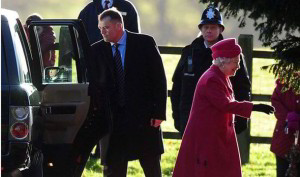
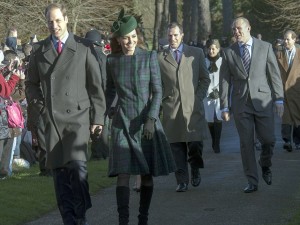
After the church services, the Royal Family will return to Sandringham House to enjoy a traditional Christmas lunch that includes a Norfolk turkey and a selection of side dishes. Then, after lunch everyone will gather at 3 pm to watch the Queen’s speech on television which is a long standing annual event broadcast on television for England and the British Commonwealth on Christmas Day, the Queen prefers to watch the broadcast in the privacy of her room.
The custom of the Christmas message was started by the Queen’s grandfather, King George V, when he gave the first one by radio in 1932 from Sandringham House where two small rooms were temporary converted into BBC radio broadcast rooms. King George V continued to give three more Christmas Messages until 1935; he died less than a month later in 1936. There was no Christmas message during 1936 from his successor, King Edward VIII, who had abdicated later that year after a brief reign. King George VI gave his first Christmas Message in 1937 graciously thanking the British people for their support during the first year of his reign; there was no Christmas broadcast in 1938. It wasn’t until 1939 and the start of World War II that the Christmas broadcast became an annual tradition. At that time, King George VI gave a special message which offered comforting words to reassure the British people during the difficult times. For the King’s final broadcast in 1951, the radio message was pre-recorded rather than delivered live due to his difficulty in speaking due to his prolonged illness.
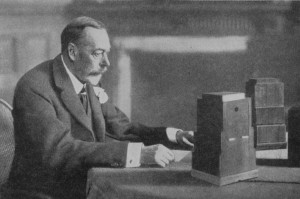
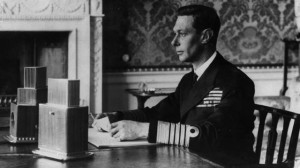
After the King’s death in February 1952, Queen Elizabeth II gave her first Christmas message later that same year. She spoke of carrying on the tradition passed on by her grandfather and father, sitting at the same desk as they did, and asking for the nation to pray for her on the event of her coronation scheduled for the next summer. The Queen continued the annual radio broadcast until 1957 when she made the first televised Christmas message. Prior to 1960, the message was always broadcast live and then starting that year the speech was pre-recorded in advance to be played on Christmas Day. Usually the location for the filming has been Buckingham Palace but other locations have been Windsor and Sandringham. Throughout the years, with the exception of 1969 when no speech was given, the Queen has used the broadcast as a way to speak directly to her audience about world, national and even personal events of the past year.
After watching the Christmas Message broadcast the Royal family will play charades, board games or go for a walk around the grounds of the Sandringham Estate. Later in the evening, an informal dinner is served and then perhaps more games or cards or simply spending time together relaxing before everyone retires for the evening.
The day after Christmas is known as Boxing Day in Britain and is traditionally when servants would receive gifts, a “Christmas Box”, from their employers. The day at Sandringham usually begins with a kedgeree breakfast; it is a cooked fish dish made of boiled rice, parsley, hard-boiled eggs, curry powder, butter or cream. After the meal, members of the Royal Family will participate in a traditional pheasant shoot. The men are the only people who are allowed to take part in the shoot while ladies usually do not participate since they are customarily not allowed to use a gun in the presence of the queen. Once the shoot is over, everyone will start to leave to enjoy the rest of the holidays with other family members. The Queen and the Duke of Edinburgh will remain at Sandringham for several more weeks until they depart sometime in February.

